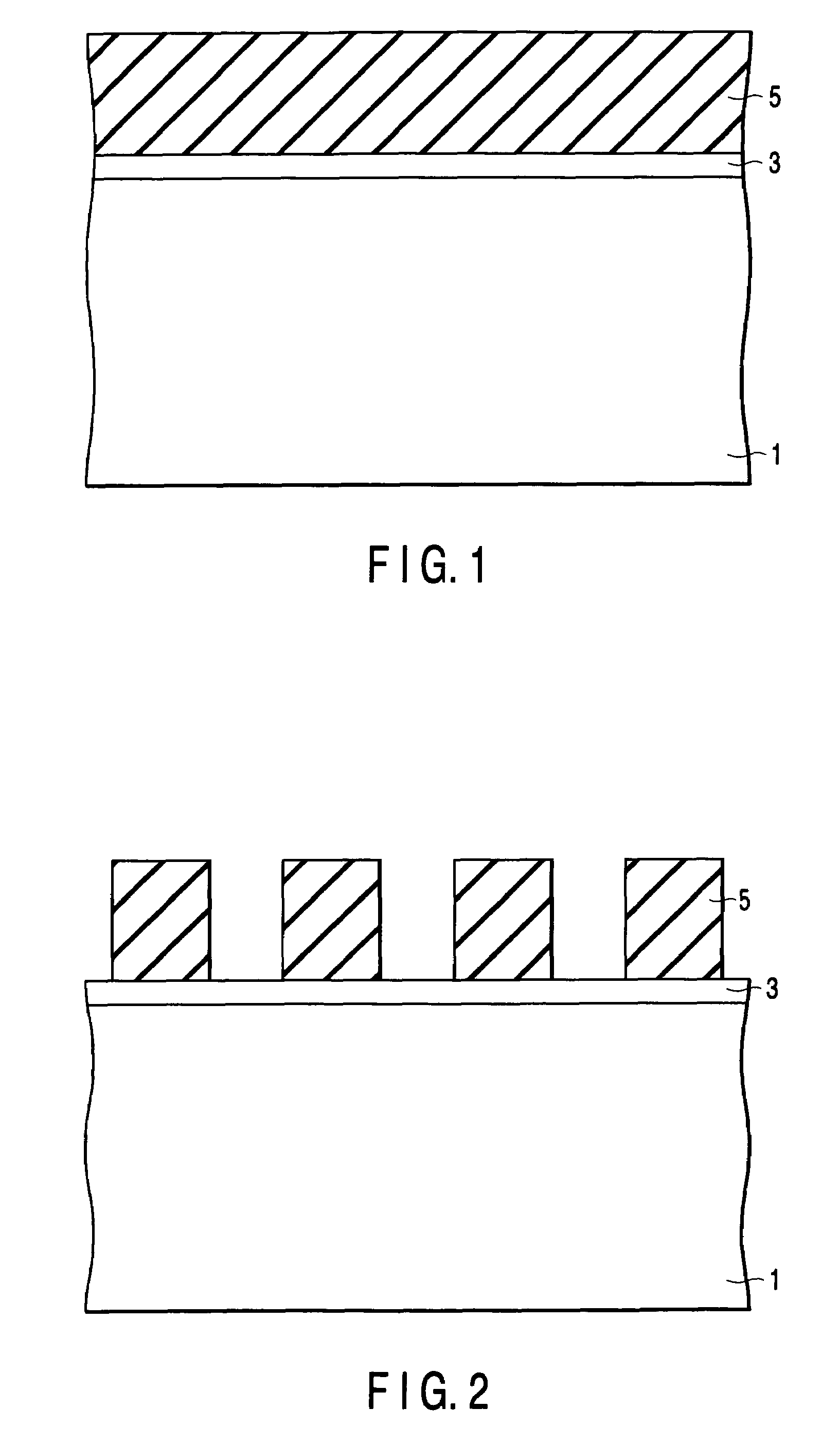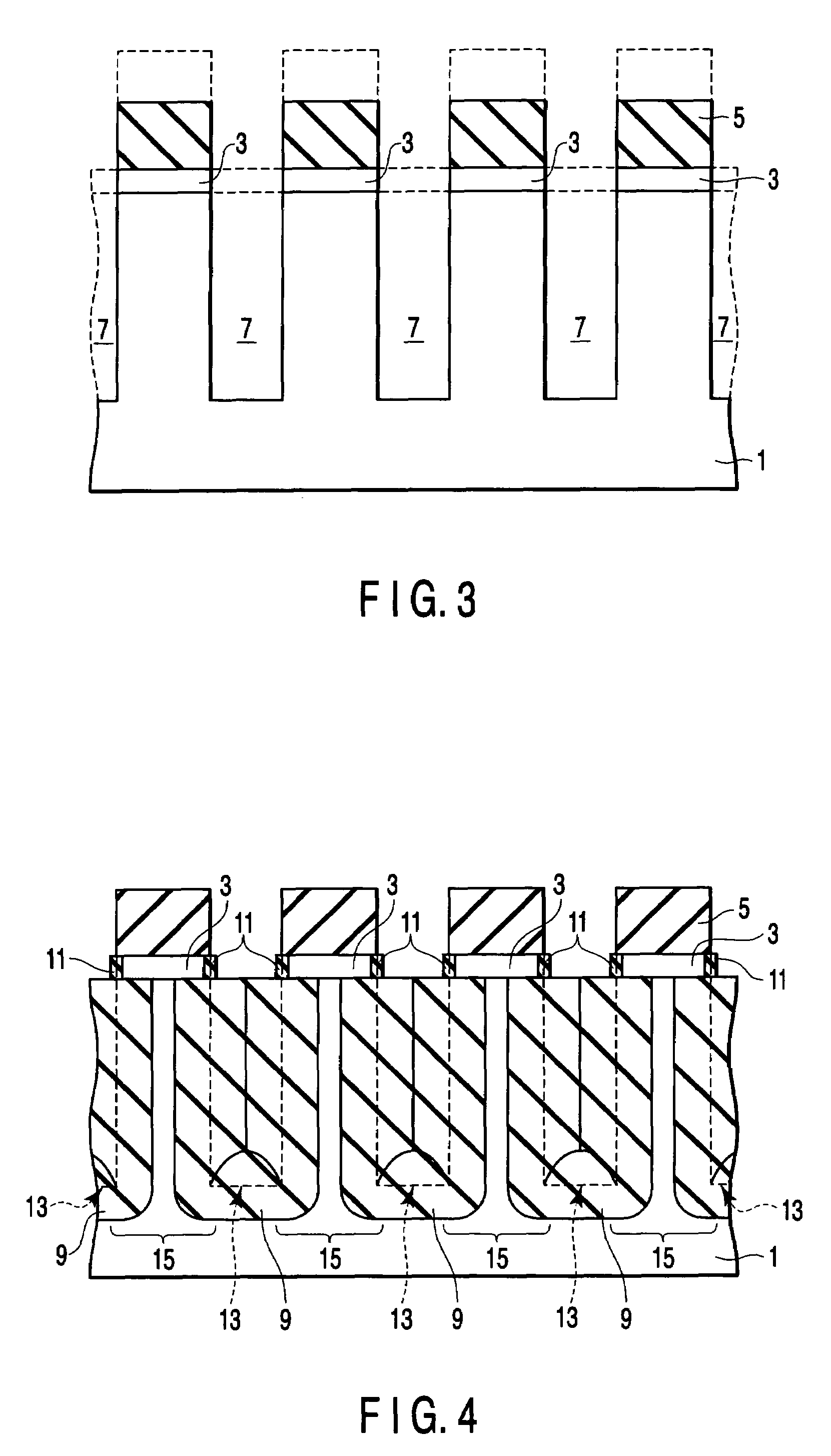Semiconductor device manufacturing method
a technology of semiconductor devices and manufacturing methods, applied in the direction of semiconductor devices, basic electric elements, electrical equipment, etc., can solve the problems of difficult to fill the trench with insulating materials, difficult to meet the requirements of the trench, and the aspect ratio of the sti region becomes higher, and achieves less susceptibility
- Summary
- Abstract
- Description
- Claims
- Application Information
AI Technical Summary
Benefits of technology
Problems solved by technology
Method used
Image
Examples
first embodiment
[0059]FIGS. 1 to 4 are cross sectional views showing one example of a semiconductor device manufacturing method according to a first embodiment of this invention.
[0060]As shown in FIG. 1, a second semiconductor layer 3 is formed on a first semiconductor layer 1. One example of the first semiconductor layer is a semiconductor substrate, that is, a semiconductor wafer and one concrete example of the second semiconductor layer 3 is a layer formed with thin film thickness on the surface of the semiconductor substrate or a thin film deposited to thin film thickness on the semiconductor substrate. In this example, the semiconductor material of the second semiconductor layer 3 is selected from semiconductor materials which are more difficult to be changed or modified into an insulator form than the first semiconductor layer 1. One example of the insulation process is oxidation.
[0061]In this example, as a material of the first semiconductor layer 1, a semiconductor material containing two o...
second embodiment
[0094]The second embodiment relates to an example associated with the definition of the width of a trench and relates to a semiconductor device having various widths of trenches.
[0095]FIG. 13 is a cross sectional view showing a first example of the width of a trench and FIG. 14 is a cross sectional view showing a second example of the width of a trench.
[0096]As shown in FIG. 13, the first example of a trench 7 is an example in which the trench 7 can be filled with an SiGe oxide 9 as explained in the first embodiment. In this case, the width “Wt” of the trench 7 is set to “Wt≦(Tsg×2)” when the thickness of the SiGe oxide 9 which grows from the side walls (the original surfaces are indicated by reference symbols 13) of the trench 7 is set to “Tsg”.
[0097]On the other hand, as shown in FIG. 14, when the width “Wt” of the trench 7 is set to “Wt>(Tsg×2)”, the trench 7 cannot be fully filled with the SiGe oxide 9 and a concave portion 61 is formed.
[0098]In a semiconductor integrated circui...
third embodiment
[0102]The third embodiment relates to a semiconductor device obtained by further improving the characteristic of the semiconductor device having the strained semiconductor structure.
[0103]The operation speed of the semiconductor device having the strained semiconductor structure is further enhanced if tensile force is caused in a P-type Si layer 3 in a strained semiconductor N-channel MISFET and compressive force is caused in an N-type Si layer 3 in a strained semiconductor P-channel MISFET. Basically, in the case of the P-type Si layer 3, a tensile material 71 which applies tensile force to the P-type Si layer 3 is formed around the P-type Si layer 3 as shown in FIG. 17. In the case of the N-type Si layer 3, a compression material 73 which applies compressive force to the N-type Si layer 3 is formed around the N-type Si layer 3 as shown in FIG. 18.
[0104]A case wherein, for example, the structure shown in FIG. 17 is applied to the MISFET having the typical STI structure is shown in ...
PUM
 Login to View More
Login to View More Abstract
Description
Claims
Application Information
 Login to View More
Login to View More - R&D
- Intellectual Property
- Life Sciences
- Materials
- Tech Scout
- Unparalleled Data Quality
- Higher Quality Content
- 60% Fewer Hallucinations
Browse by: Latest US Patents, China's latest patents, Technical Efficacy Thesaurus, Application Domain, Technology Topic, Popular Technical Reports.
© 2025 PatSnap. All rights reserved.Legal|Privacy policy|Modern Slavery Act Transparency Statement|Sitemap|About US| Contact US: help@patsnap.com



